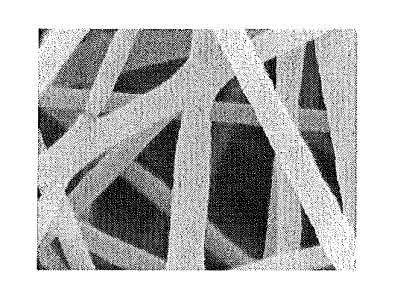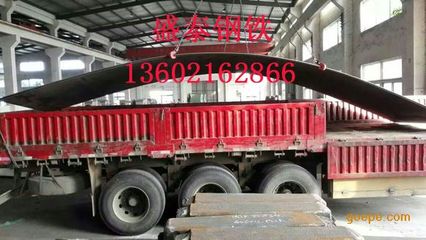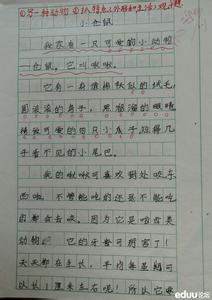Energy&
EnvironmentalScience
Citethis:EnergyEnviron.Sci.,2012,5,7898www.rsc.org/ees
View Online / Journal Homepage / Table of Contents for this issue
DynamicArticleLinksC
COMMUNICATION
Triple-coaxialelectrospunamorphouscarbonnanotubeswithhollowgraphiticcarbonnanospheresforhigh-performanceLiionbatteries?

YumingChen,aZhouguangLu,aLiminZhou,*aYiu-WingMaiabandHaitaoHuangc
Downloaded by University of Science and Technology of China on 23 June 2012Published on 01 May 2012 on http://pubs.rsc.org | doi:10.1039/C2EE22085G
Received23rdFebruary2012,Accepted30thApril2012DOI:10.1039/c2ee22085g
Wepreparedamorphouscarbonnanotubesdecoratedwithhollowgraphiticcarbonnanospheres(ACNHGCNs)usinganoveltriple-coaxialelectrospinningmethodandcharacterizedtheelectro-chemicalperformanceoftheseACNHGCNsasanodematerialsforlithiumionbatteries(LIBs).TheACNHGCNsdisplayedaveryhighreversiblespeci?ccapacityof$969mAhgà1atacurrentdensityof50mAgà1,whichisnearly2.6timesthetheoreticalcapacityofgraphite(372mAhgà1).TheACNHGCNsalsoshowedahighvolumetriccapacityof$1.42Ahcmà3andgoodcyclingstabilityandoutstandingratecapability.ThepreparedACNHGCNscanbeapromisingalternativeanodematerialusedforhigh-energy,low-costandenvironmentallyfriendlylithiumionbatteries.
Considerableattentionhasbeenpaidtorechargeablelithiumionbatteries(LIBs)becauseoftheirhighenergydensityandlongcyclelifetime.1However,exploringanddevelopingnovelelectrodemate-rialswithsuf?cientlyhighenergyandpowerdensitytomeettherequirementsimposedonapplicationofLIBsinhigh-powerdevicessuchaselectricvehicles(EV)andhybridelectricvehicles(HEV)remainsachallenge.ThecurrentcommerciallyavailableanodematerialsemployedinLIBsaregraphitesduetotheirlonglifespan,
DepartmentofMechanicalEngineering,TheHongKongPolytechnicUniversity,HongKong,China.E-mail:mmlmzhou@inet.polyu.edu.hk;Fax:+86852-23654703;Tel:+86852-27666663b
CentreforAdvancedMaterialsTechnology(CAMT),SchoolofAerospace,MechanicalandMechatronicsEngineeringJ07,TheUniversityofSydney,NSW2006,Australiac
DepartmentofAppliedPhysicsandMaterialsResearchCenter,TheHongKongPolytechnicUniversity,HongKong,China
?Electronicsupplementaryinformation(ESI)available:Syntheticdetailsandadditionalexperimentaldata.SeeDOI:
10.1039/c2ee22085g
a
lowcostandlowelectrochemicalpotentialwithrespecttolithiummetal.2However,thepracticaluseofcarbonintheapplicationofLIBsinEVandHEVhasbeenrestrictedbyitslowstoragecapacity(372mAhgà1ofgraphitecorrespondingtoastoichiometricLiC6composition)duetothestructureofgraphite,andthelimitedrateperformanceoftherate-limitingstepinthechemicaldiffusionoflithiumionswithinthebulkelectrodematerial.3,4Moreover,theunwantedmetalliclithiumplatinginevitablyoccursonthegraphite-basedanodebecauseofitsworkingpotentialofaround0VversusLi+/Li.Thisdestroysthesolidelectrolyteinterface(SEI)onthegraphitesurface,decreasescyclingef?ciencyandraisessafetyissuesduetotheinternalshort-circuitingassociatedwiththeformationofdendriticlithium.5,6Inaddition,graphite-basedanodematerialshaveavery?atcharge–dischargeplateauataround0.3Vwhichmakesitdif?culttopredictthestateofchargeanddischargeofthebatteries.Toaddresstheseproblems,intensiveresearchhasbeendevotedtoexploringnovelcarbonaceous-basedanodealternativessuchas1-Dcarbonnano?bersandnanotubes,7,82-Dcarbonnanosheets9andgraphenespossessingabroadoperatingpotentialrangeabout0–3Vandslopingcharge–dischargecharacteristics.10But,thehighstoragecapacityofthesematerialsremainsanissue.Recently,hybridcarbonnanomaterialsandgraphenenanostructureshavebeenshowntobepromisingcandidatesforanodesinLIBs.Thesenanostructurescanleadtomultiplefunctionalitiesbycreatingadditionalsitesforstorageoflithiumions,whichcanimproveconsiderablythelithiumstoragecapacity.11–14However,theirpotentialapplicationinpracticalLIBsishinderedbytheirlimitedcyclelife,resultingfromthevolumeexpansionduringtherepeatedlithiationanddelithiationprocesses.13,14
TodevelopLIBswithalargecapacityandlonglifetime,novelanodematerialsneedtobedeveloped.Inthisstudy,wehavefabri-catedanovelarchitecturemadeofamorphouscarbonnanotubesdecoratedwithhollowgraphiticcarbonnanospheres(ACNHGCNs)
byanoveltriple-coaxialelectrospinningmethodincombinationwithsubsequentcalcinationandacidtreatment,andhaveextensivelycharacterizedtheirelectrochemicalperformanceashigh-performanceanodematerialsfornext-generationhighenergyandhighpowerLIBs.Comparedwiththeamorphouscarbons,theACNHGCNsprovideadditionalsitesforstorageoflithiumions,thusimprovingthelithium-storagecapacity.ThespecialstructureofACNHGCNsprovidesabuffertoalleviatethevolumeexpansioncausedbyrepeatedLi+intercalation,whichenhancesthecyclelifetime.15Duetothehighlygraphinizedhollowcarbonnanospheresthathavebeenwell-dispersedthroughouttheamorphouscarbonnanotubes,ACNHGCNspossesshighelectronicconductivityandfacilitatefastLi+diffusioninsidetheelectrodesothatverygoodratecapabilitycanbeachieved.16–18Wehavealsodemonstratedthatelectrospinningisasimpleandelegantmethodtoproducenovelcarbonnanostructureswithsuperiorelectro-chemicalproperties.
Atypicaltriple-coaxialelectrospinningmethodschematicallyisillustratedinFig.1a.Threeviscousliquidsweresimultaneouslyfedthroughtheinner(mineraloil),middle(polyacrylonitrile(PAN)solution),andouter(amixedsolutionofpolyvinylpyrrolidone(PVP)andnickelacetate(Ni(Ac)2))metalliccapillaries,wherePANservedasthecarbonsource,nickelformedbythedecompositionofNi(Ac)2asanormalcatalystforgraphitizationofcarbon,19,20andPVPasatemplate.Whenasuitablehighvoltageof17kVwasappliedbetweenthespinneretandthecollector,thejetwasstretchedbyelectrostaticforces.PVPandPANweremixedtogetherduringtheelectrospinningprocessduetotheuseofthesameDMFsolvent.Hence,Ni(Ac)2couldbeuniformlytransportedontothesurfaceandthePANmatrix.21Finally,coaxialcompositenano?berswerefabri-cated.Subsequently,asdescribedinFig.1b,thecollectednano?berswerestabilizedat250??Cfor2hunderH2(5%)/N2(95%)toevap-oratetheoiltoformananotubestructure.Aftercalciningat600??Cfor3hunderaH2/N2atmosphere,PVPwasburntoutandahighlyporousstructurewasformedandNinanoparticleswereproducedbythedecompositionofNi(Ac)2.ThePANcoatedontheNinano-particleswasdecomposedintoamorphouscarbon,whichwasthen
transformedtographiticcarbonunderthecatalyticeffectofNimetalnanoparticles.Asaresult,amorphouscarbonnanotubesdecoratedwithNinanoparticlesencapsulatedingraphiticcarbonnano-spheres(ACNNNGCNs)werefabricated.AfterimmersioninHClsolution,theNinanoparticlesweredissolvedtoproduceACNHGCNs.Triple-coaxialelectrospinningwasusedtopreparetheACNHGCNsratherthancoaxialelectrospinningfortwomainreasons.First,intheprecursor,theadditionofmoreNi(Ac)2intothePANsolutionnotonlygreatlyincreasedtheelectrospinningsolutionconductivity,whichledtodeepatomizationoftheliquidsandtheirbreakageintopolydispersedelectrosprays,22italsoallowedthemixedPAN–Ni(Ac)2solutiontoactasanouter?uidprecipitatewhentheconcentrationofNi(Ac)2wasraisedto$11wt%.ThehighertheconcentrationofNi(Ac)2,thebettertheperformance,becausethereducedmetallicNinanoparticlesarecrucialcatalystsfortheformationofhollowgraphiticcarbonnanospheres.Second,intro-ducingPVPintothePAN–Ni(Ac)2solutionincreasedthenumberoffunctionalgroupsforNicoordinationtoavoidtheprecipitationofNi(Ac)2.DuringthecalcinationofPVP/PAN/Ni(Ac)2@Oilcomposite?bers,PVPwasburntoutandPANturnedintocarbon.TheconcentrationofNiformedbydecomposingNi(Ac)2wasincreasedinthecarbonmatrix.Further,thismethodpreventstheformedNifromaggregatingandcontrollingthediameterofthehollowgraphiticcarbonnanospheresobtainedbypost-treatingNiwithacid,whichplaysaveryimportantroleintheelectrochemicalperformanceofthepreparedmaterials.However,phaseseparationbetweenPANandPVPdidoccurinthePAN/PVP/Ni(Ac)2elec-trospunsolutionduetothelimitedsolubilityofthesecompounds.The?eld-emissionscanningelectronmicroscopyimage(FESEM)inFig.2arevealsthepresenceofsomenanospheres(diameterz25nm)onthesurfaceofthenanotubeshavinganaverageoutsidediameterof200nm.Atthesametime,nanosphereswereobservedonthesurfaceoftheinsidewallofthebrokennanotubes(seearrowinFig.2b).Theseexposednanospheresontheinsideand/oroutsidesurfacesofthenanotubesarefavorableforlithiumiondiffusionfromdifferentorientationsandprovidesuf?cientcontactbetweenactivematerialsandelectrolytes.11,12Theobtainednanomaterialsretainedtheirmorphologyafteracidtreatment(Fig.S1?).
Transmissionelectronmicroscopy(TEM)analyseswereemployedtocharacterizethepreparednano-materials.Fig.3ashowsthattheproducthasananotubestructureandNinanoparticleswith$15nmdiameteraredecoratedhomogeneouslyontheamorphouscarbonnanotube.TheHRTEMmicrographinFig.3brevealsthe
structure
Downloaded by University of Science and Technology of China on 23 June 2012Published on 01 May 2012 on http://pubs.rsc.org | doi:10.1039/C2EE22085G
Fig.1(a)Schematicillustrationofthenoveltriple-coaxialelectro-spinningtechniqueusedtopreparethePVP/Ni(Ac)2/PAN@Oilcoaxialcompositenano?bers.(b)Proposedsynthesisschemefor
ACNHGCNs.Fig.2FESEMimagesof(a)ACNNNGCNsand(b)brokenACNNNGCNsfabricatedbythenoveltriple-coaxialelectrospinningtechnique.
Downloaded by University of Science and Technology of China on 23 June 2012Published on 01 May 2012 on http://pubs.rsc.org | doi:10.1039/C2EE22085G
Fig.3TEMandHRTEMimagesofthecompositenanotubes(aandb)beforeand(candd)afterthedissolutionofnickel.TheinsetimageshowstheSAEDpatternofthecorresponding
nanotubes.
ofmetallicNinanoparticlesencapsulatedingraphiticcarbonnano-sphereswithathicknessof$5nm.Theresolvedinter-planardistancesare$0.23and0.34nm,whichcorrespondtothe(010)planeofNiandthe(002)planeofcarbon,respectively.Thespot-andring-likepatternsintheselectedareaelectrondiffraction(SAED)(insetinFig.3a),energydispersiveX-rayspectroscopy(EDS)(Fig.S2?),andX-raydiffraction(XRD)(Fig.S3?)furthercon?rmthepresenceofcrystallineNiandcarbon.Theinsidediametersofthenanotubesweremeasuredtobe$80nm.Afteracidtreatment,themetallicNinanoparticlesweredissolved,leadingtotheformationofhollowgraphiticcarbonnano-sphereswithadiameterof$15nm(Fig.3candd).AccordingtotheFESEMandHRTEMimages(Fig.2,3andS4?),thewallsoftheamorphouscarbonnanotubespartlyconsistofhollowgraphiticcarbonnanospheres,somearedecoratedontheinsideandoutsidesurfaces.Ramanspectrumanalysesrevealedthattheobtainednanomaterialswerepartlygraphiticcarbon(Fig.S5?).AlthoughthesmalldarkNiparticlesstillcanbeseenintheACNHGCNs,itsconcentrationof$1.6wt%obtainedbyEDS(Fig.S6?)istoosmalltohaveanysigni?canteffectonthespeci?ccapacityofACNHGCNs.
Fig.4ashowsthegalvano-staticvoltagepro?lesofACNHGCNsatacurrentdensityof50mAgà1inthevoltagerange0–3VversusLi+/Li.Thevoltageplateauat$0.7Vinthe?rstdischargecycleiscloselyrelatedtotheelectrolytedecompositionandformationofasolidelectrolyteinterface(SEI).7The?rstchargeanddischargespeci?ccapacitiesare1597and892mAhgà1,respectively.ThelargeirreversiblecapacityintheinitialcyclecanbeascribedtotheSEIformation.23Thespeci?ccapacityapproachesanoptimizedvalueof969mAhgà1afterthe15thcycle,whichishigherthanthatofearliercycles.Thisresultisbecauseofthefactthatitisharderforthebindertosoakandabsorbtheelectrolyte.Thehollownanosphereswerenotfullyactivatedduringtheinitialcycles,butthelithium-iontransportchannelwasextendedasthecharge–dischargecyclingprogressed,whichactivatedtheremainderofthecarbon.24Fig.4bshowsthatthe
Fig.4ElectrochemicalpropertiesofACNHGCNsasanodeelectrodesforLiionbatteries.(a)Charge–dischargevoltagepro?lesofACNHGCNelectrodescycledatacurrentdensityof50mAgà1between3and0VversusLi+/Li.(b)CyclingperformanceofACNHGCNelectrodesatdifferentcurrentdensities.(c)ComparisonoftheratecapabilitiesofACNHGCNs,CNF,25CNT,8GNS,13GNS/CNF,12naturalgraphite31andhollowcarbonnanospheres.11(d)NyquistplotsofACNHGCNsandamorphouscarbonnano?berelectrodesafter10cyclesatarateof0.05Agà1.
ACNHGCNsexhibitedgoodcyclicperformanceandmaintainedareversiblecapacityof$965mAhgà1after100cycles,whereasACNNNGCNsandamorphouscarbonretainedonly531and400mAhgà1,respectively(Fig.S7andS8?forthestructureofamorphouscarbon).Tothebestofourknowledge,thisperformanceissuperiortothatofothercarbonmaterialsincludingcarbonnano?bers(CNF,200mAhgà1),25carbonnanotubes(CNT,210mAhgà1),8CNF/CNT(546mAhgà1),26electrospunporousamorphousCNF($530mAhgà1)27andgraphene(453mAhgà1),12aswellasmetaloxidesandtheircompositessuchasMn3O4–graphene(890mAhgà1),28MnO2–CNT($700mAhgà1)29andSnO2(559mAhgà1).30Furthermore,thecapacityof$330mAhgà1at3.7Agà1isretainedafter650cycles,andthecoulombicef?cienciesatbothlowandhighcurrentdensityremainmorethan99%aftertheinitialfewcycles.Fig.S9?showsthecyclicvoltammogramsoftheACNHGCNelec-trodeat0.1mVsà1.Itisclearlyshownthattherearetworeductionpeaksof$1.5Vand0.7Vinthe?rstcycle,whichcorrespondtotheirreversiblereactionsbetweentheACNHGCNelectrodeandelec-trolyte,andtheco-intercalationofthesolvatedlithiumionintographenesheets.12,31Thechangefromthe?rstcycletothesecondcycleisduetotheincompleteconversionreactionandirreversiblelithiumlossbecauseoftheformationoftheSEI?lm.31Duringthesecondcycletothefourthcycle,thereisnoclearchangeimplyingthattheelectrodeisstableduringthefollowingcharge–dischargecyclesafterthe?rstcycle.Furthermore,therearenotanypeaksintheCVcorrespondingtoreduction–oxidationreactionsofNiO/Ni.32ThisalsoindicatesthattheNiparticleswithacontentof$1.6wt%inACNHGCNshaveaverysmallcontributiontothecapacityoftheelectrode.Therefore,thehighcapacityshouldbemainlydue
to
Downloaded by University of Science and Technology of China on 23 June 2012Published on 01 May 2012 on http://pubs.rsc.org | doi:10.1039/C2EE22085G
theACNHGCNs.Fig.4cshowstheratecapabilityoftheACNHGCNelectrode.Atcurrentdensitiesof0.05,0.1,0.25,0.5,1.85and3.7Agà1,thereversiblecapacitiesofACNHGCNsareabout960,748,573,456,400and330mAhgà1,respectively,whicharehigherthanthoseofCNF,25CNT,8graphenesheets(GNS),13GNS/CNF,12naturalgraphite33andhollowcarbonnanospheres.11Electrochemicalimpedancespectroscopy(EIS)measurementsalsoshowedthatthevalueofhigh-frequencysemicircleinACNHGCNsismuchsmallerthaninamorphouscarbonnano?bers,implyingthattheACNHGCNelectrodespossessahigherelectricalconductivityandamorerapidcharge-transferreactionforlithiumioninsertionandextraction(Fig.4d).11,12TheseshowthatACNHGCNshaveagoodcyclingstabilityatbothlowandhighcurrentdensityandoutstandingrateperformance.TodemonstratepotentialsforrealbatteryapplicationwehavemeasuredthevolumetriccapacitiesoftheACNHGCNsasshowninFig.S10?.ItisshownthattheACNHGCNsexhibitahighvolumetriccapacityof$1.42Ahcmà3whichisapproximately1.7timeshigherthanthatofgraphite(0.837Ahcmà3)34andmaintainexcellentreversiblevolumetriccapacityover100cycles.WewillfurtherstudythetapdensityofACNHGCNsbyadjustingthediameterofACNHGCNsviaanelectrospinningprocessanddecoratingtheACNHGCNswithothermaterialstoobtainevenhighervolumetriccapacities.
TobetterunderstandthereasonsthatACNHGCNelectrodesexhibitedveryhighspeci?ccapacity,wefurtherusedHRTEMtoexaminethestructuralchangeofthehollowgraphiticcarbonnano-spheres(HGCNs)upontheelectrochemicalcharge–dischargeprocess(Fig.5).Fig.5ashowsthatthewallofahollowgraphiticcarbonnanospherecontainsmanydefectsbetweendiscontinuousgraphenesheets,asindicatedbythearrows.Also,thehollowstructurewouldprovideadditionalsitesforLi+storageafterdissolvingNinano-particles.Thedefectsandthehollowstructuregiveextrasitesfor
storageoflithiumions,therebygreatlyenhancingtheelectrodecapacity.23,35–37ThemorphologyoftheHGCNbecomesalittlevagueandthecrystallinitydecreasesaftertheinitial5charge–dischargecycles(Fig.5b).ThiseffectisclearerfortheHGCNafterstabilizationfollowing100charge–dischargecycles(Fig.5c),andiscon?rmedbyRamanscattering(Fig.S11?).Fig.5dfurtherdemonstratesthattheporesizeofHGCNonACNHGCNsis$15nm.Thetwopeaksbetween1and5nmindicatetheexistenceofnano-poresinthewalloftheamorphouscarbonnanotubesduetothecalcinationofelectro-spuncompositeprecursorssinceACNNNGCNsalsoshowtwosimilartypesofporesizesbetween1and5nmwhencomparedtoamorphouscarbonnano?bers(Fig.S12?).TheseresultsshowthattheHGCNaswellasnanoporesinthewallofnanotubeshavemoresitesforthestorageoflithiumions,yieldingmuchincreasedspeci?ccapacity.23,35–37
Givenitssuperiorelectrochemicalperformanceandgoodcombi-nationofahighreversiblecapacity,excellentcyclestabilityandremarkableratecapability,theACNHGCNelectrodeisaverypromisingcandidateanodematerialforthenextgenerationLIBs.TheelectrochemicalenhancementwouldbeattributedtotheuniquestructureofACNHGCNs,whichyieldsseveralfavorableproperties.First,thedefectsinthehollowwalls,thehollowstructure,andnanoporesinthewalloftubesprovideextrasitesforthestorageofLi+,whichimprovethelithium-storagecapacity.23,35–37Second,thehollownanospheres,nanoporesandnanotubecoreactasbufferstosubstantiallywithstandthelargevolumeexpansionandshrinkagethatoccurduringtheLiinsertionandextractionprocess,increasingthecyclelifetimeoftheelectrode.15Third,thestructuresofthehollownanospheresandnanochannelnanotubesandnanoporesallowbetterLi+accessandfasttransportationoflithiumions,thusreducingsubstantiallythediffusionpathsforLi+.16–18Finally,thearchitecturemaintainsthemechanicalintegrityandhighelectricalconductivityoftheoverallelectrode.AllthesecharacteristicsenhancetherateperformanceofACNHGCNs.
Conclusions
Insummary,wehavesuccessfullyemployedanoveltriple-coaxialelectrospinningtechniquetoprepareanovelarchitectureconsistingofamorphouscarbonnanotubesdecoratedwithhollowgraphiticcarbonnanospheres.Theobtainednanomaterialsexhibitedexcellentelectrochemicalperformance,withagoodcombinationofhighspeci?cdischargecapacityandvolumetriccapacity,goodcyclingstabilityandratecapability,whichmakesthemexcellentcandidatesforuseasanodematerialsforthenext-generationhighpowerandhighenergyLIBs.
Acknowledgements
TheauthorsaregratefulforthesupportreceivedfromtheResearchGrantCounciloftheHongKongSpecialAdministrationRegion(grant:PolyU5349/10E)andTheHongKongPolytechnicUniversity(grant:1-BD08).
Fig.5HRTEMimagesofhollowgraphiticcarbonnanosphereelec-trodes:(a)beforeandafter(b)5,and(c)100charge–dischargecycles.(d)PoresizedistributionofACNHGCNsandamorphouscarboncalculatedusingtheBJHmethod.
Notesandreferences
1P.PoizotandF.Dolhem,EnergyEnviron.Sci.,2011,4,2003.
2V.Etacheri,R.Marom,R.Elazari,G.SalitraandD.Aurbach,EnergyEnviron.Sci.,2011,4,
3243.
百度搜索“爱华网”,专业资料、生活学习,尽在爱华网!
 爱华网
爱华网



